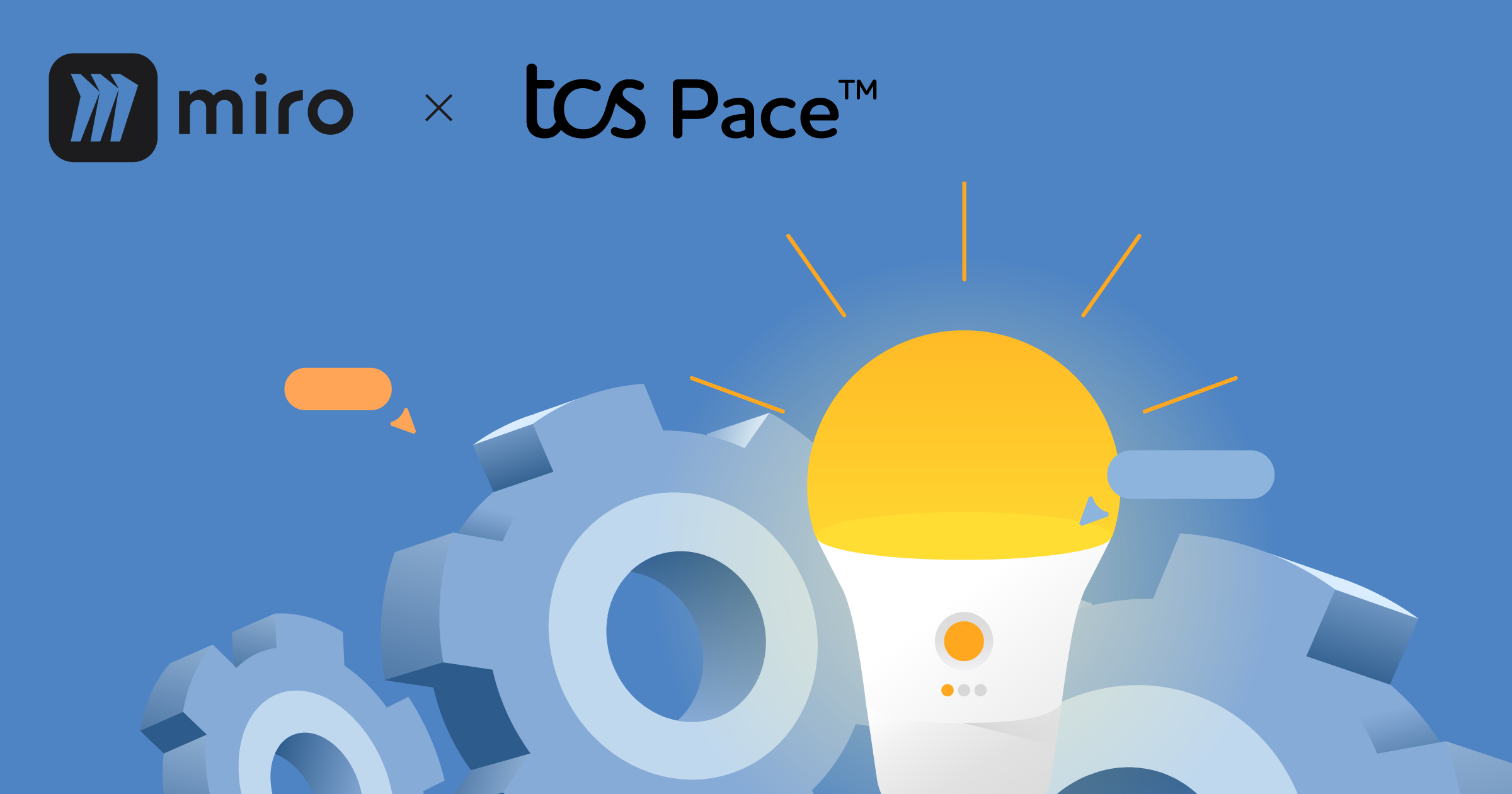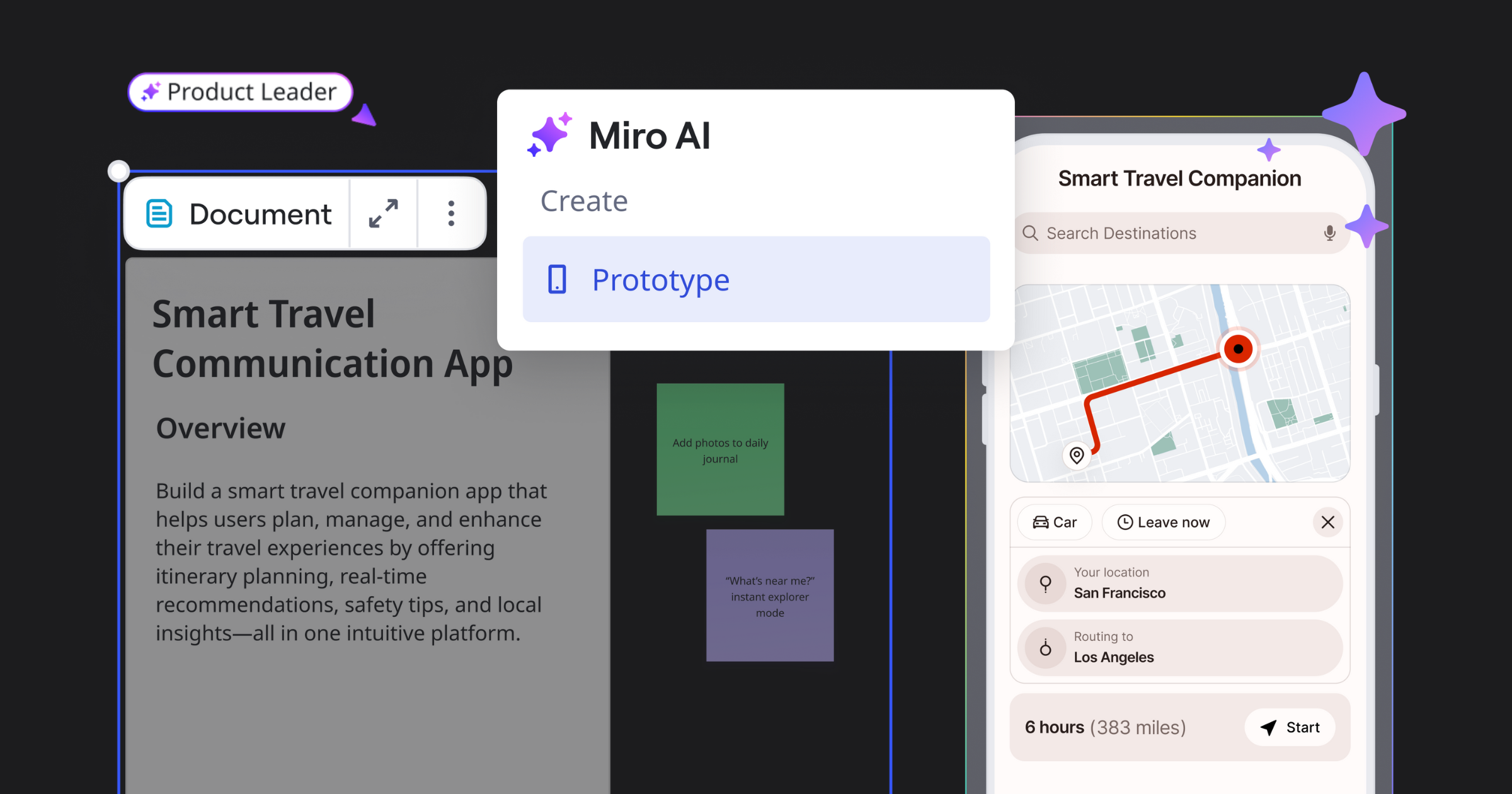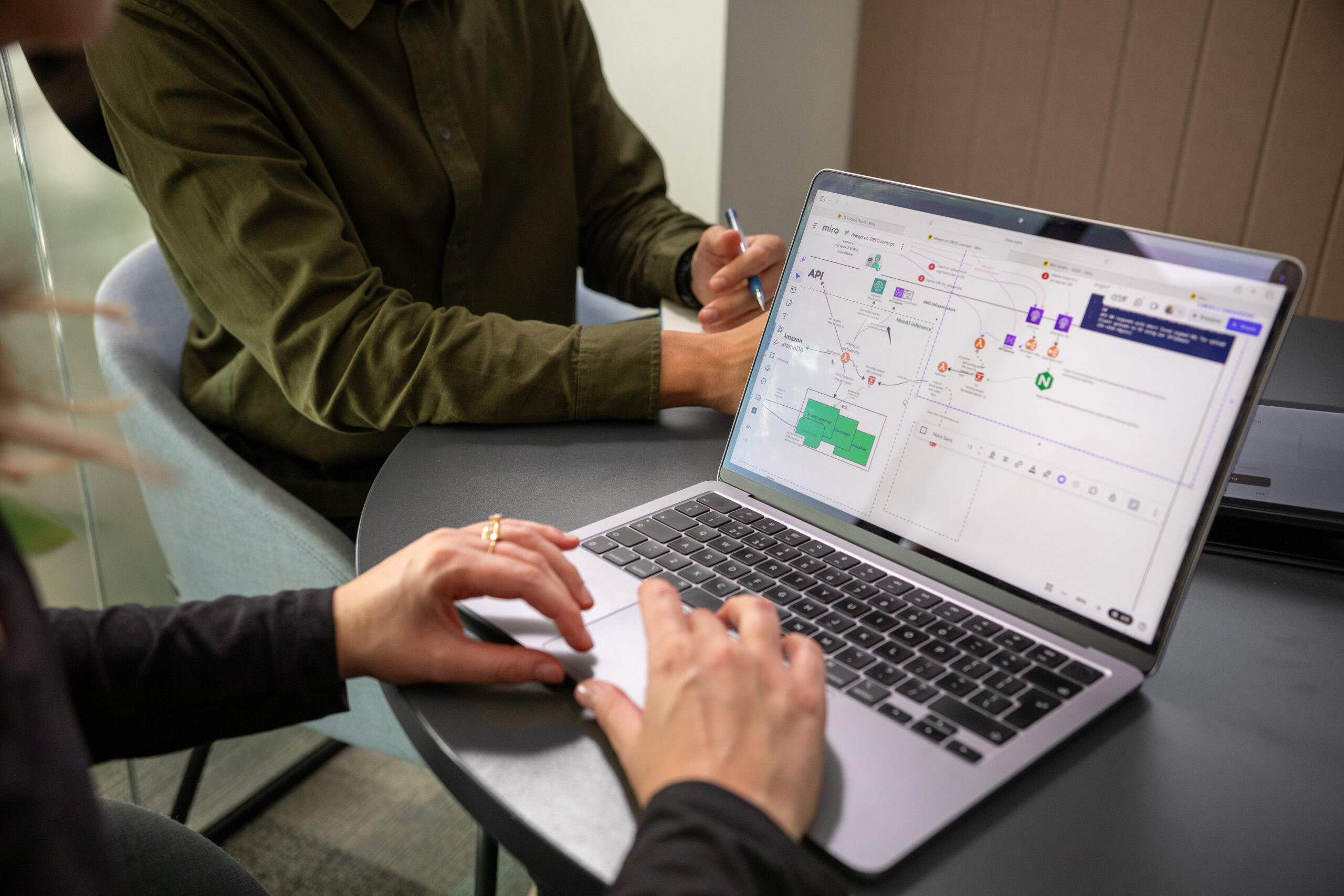Since 1998, Grupo Bancolombia has been dedicated to helping clients achieve their personal and professional dreams while remaining one of the most sustainable banks in the world.
Whether a client is looking to buy a home, launch a business, or pursue higher education, Bancolombia strives to exceed client expectations with a diverse portfolio of innovative products and services.
Bancolombia has been known as a trendsetter ever since launching the first online payment system in Colombia and introducing the first credit card in Latin America. In the modern world of digital banking, the company continues to innovate to deliver value to shareholders while ensuring the social, economic, and environmental welfare of communities throughout Colombia, Panama, and El Salvador.
True to its reputation, Bancolombia applies this pioneering spirit within its own organization.
Faced with the challenge of organizing and scaling a democratized design skill, Marcela Velasquez Montoya, Head of Design, was looking to boost productivity and collaboration between team members. However, with 110 designers spread out between multiple buildings in the city and across four different countries, this was no easy task.
Marcela also wanted to nurture a more cooperative relationship between the community of designers and the extended community of other roles such as: designers, product managers, and developers within the organization. Non-designers often lacked the necessary historical context for a project, hindering their ability to contribute at crucial points in the design process.
In order to create a streamlined customer experience, we wanted to bring together people of different disciplines and empower them to join in the design decision-making process.

At the time, design workshops were mainly an analog affair. The Design team would use a compilation of tools — paper sticky notes, Microsoft Teams, Sharepoint, Excel spreadsheets, Powerpoint, and other Office 365 tools in hopes of creating a cohesive picture of where the product was and where they wanted it to be.
Not only was it time-consuming to track down these historical assets, but it often required team members to start from scratch as they had to recreate missing artifacts.
Marcela knew she needed a tool to not only empower designers to collaborate without barriers and share resources securely, but to foster a culture around shared values centered around people using a common visual language and standardized practices.
Profile
Bancolombia
Bancolombia Is a full-service financial institution that provides a range of financial products and services to a diversified individual and corporate customer base throughout Colombia, as well as in other jurisdictions, such as Panama, El Salvador, Puerto Rico, the Cayman Islands, Peru and Guatemala.
challenge:
· Design team used too many tools
· Cross-team visibility was low
· Preparing for workshops took too much time
Value Created:
· Organized team collaboration efforts.
· Reduced workshop preparation workload.
· Enabled easy sharing of common assets.
· Empowered non-designers to participate in the design process.
· Made design culture more transparent.
· Outside collaboration without compromising security.
Solution:
Miro Enterprise.
From paper to canvas: cross-functional teams come together via online whiteboard
While the Design team had tried other digital workspaces before, they found Miro’s online collaborative whiteboard platform to be one of the best suited options.
The Design team built their own templates to construct customer journey maps. The combination of the infinite canvas and virtual collaboration tools that mirrored the way they’d normally work with a real whiteboard and sticky notes.

Designers working remotely could contribute to the team’s Miro board no matter where they were located, permitting the team to work asynchronously within a single collaborative space.
Bancolombia’s Design team began to use Miro to create and store commonly used assets, such as a universal color palette and templates for presentations, mind mapping, and defining user personas.
Miro is very intuitive and allows us to work in a way that is very natural for us.
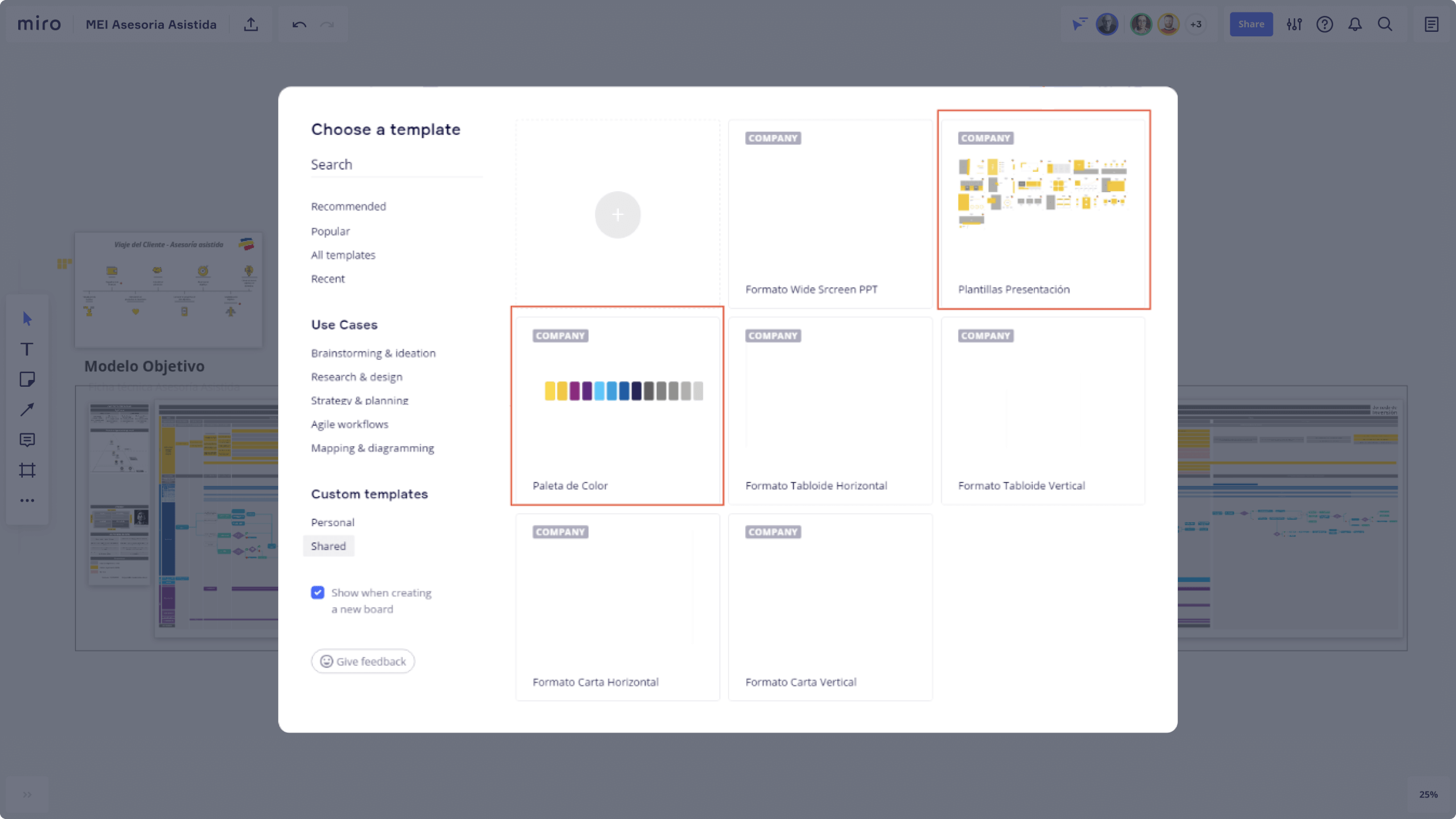
Quick to see the potential for boosting their productivity even further, the team started to leverage Miro to make their analog design workshops more efficient.
Preparing for a workshop became a simple matter of tossing all of the artifacts related to a project onto a single Miro board. With all of the relevant photos, spreadsheets, sticky notes, Google Docs, and mockups on one centralized canvas, the Design team could create a cohesive picture of a project’s history and current status.
Adoption of Miro was incredibly fast. Both designers and non-designers found the tool very useful and began to use it all the time.
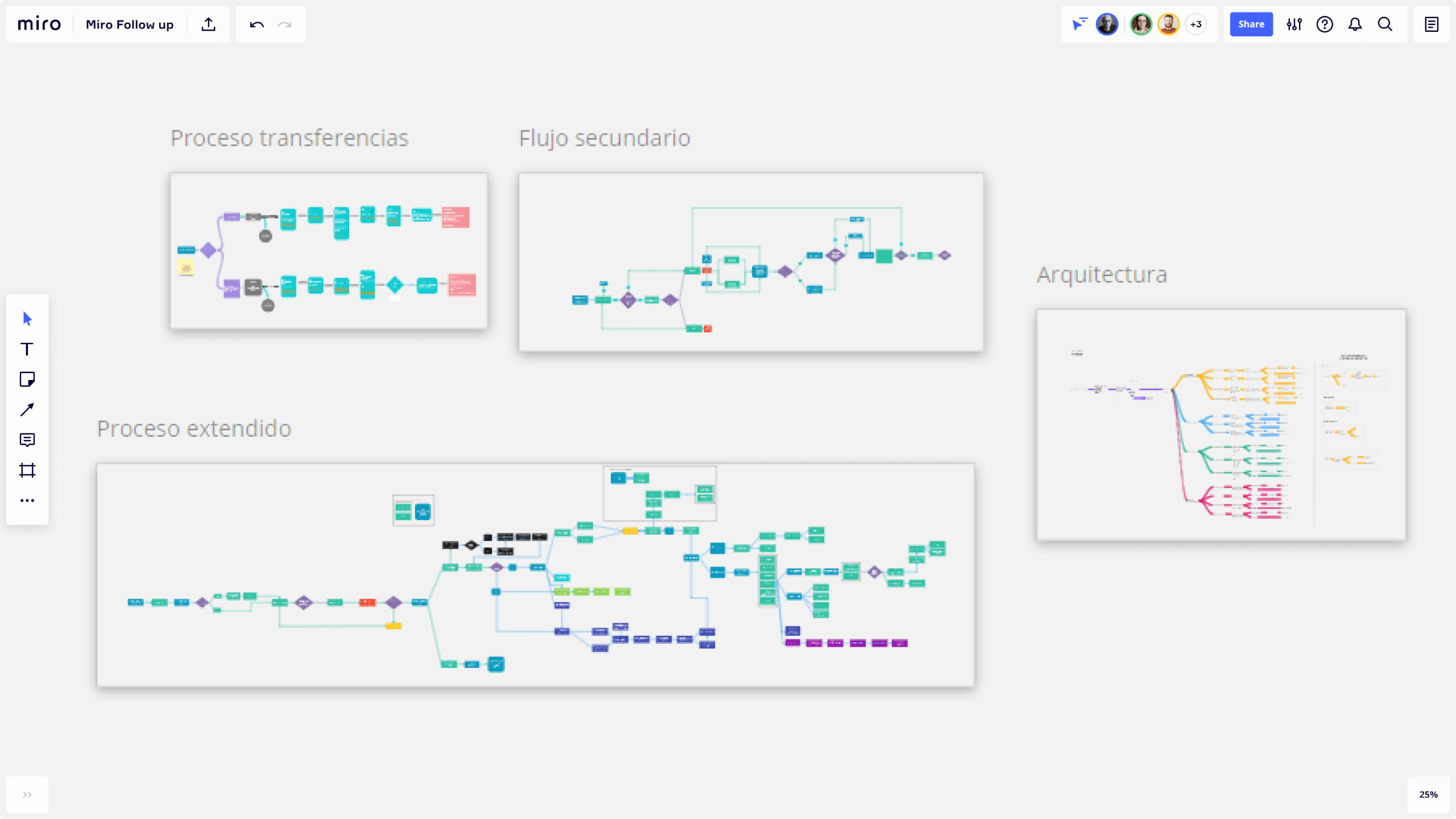
With Miro, workshops could continue to be a mix of analog and digital. Real sticky notes could be easily digitized and added to a Miro board without having to be manually typed up. Photos of the whiteboard could be uploaded to prevent the need to track them down later in Microsoft Teams or OneDrive. Any relevant assets in Jira or Sketch could be quickly added using Miro’s native workflow integrations.
With little training required, non-designers and third parties could contribute ideas, add comments, and participate in these brainstorming sessions using Miro’s collaboration toolkit.
By the end of a workshop, the team had a complete and visually pleasing digital synthesis of their collaboration that they could be proud to share with project stakeholders.
Because of Miro we immediately have a summary of our workshops in digital form. It works beautifully. It makes us happy and proud to share this with the people that are involved

As more teams began creating their own Miro accounts, they knew they needed a more robust plan to keep projects organized and valuable data secure.
Today, Bancolombia has 25 teams and over 100 designers collaborating within Miro. With Miro Enterprise, these teams are given private workspaces clearly organized by initiative, making it simple for stakeholders to find their way. Advanced user management ensures team privacy by allowing the team to grant the right user access to the right board.

Miro creates “Common Language” between disciplines, boosts Designer Productivity
With the ability to easily and quickly share their best practices, past work, and resources in Miro, the team is able to speed up the design development process.
Ideas are no longer getting lost in a notebook or a OneDrive folder, and it is now far easier to organize and find artifacts related to a specific project — even if the files were created two years before — taking the headache out of workshop preparation.
As a result, collaboration between the designers themselves has become more efficient and full of shared understanding.
Miro makes it easier to work with our peers. We’ve noticed an enhanced understanding and better communication between teams.

Instead of spending time searching for and trying out a user persona template online, for example, we can simply ask someone to ‘send us the link’ and within five seconds we’ll have what we need
With Miro Enterprise, Maria and Marcela team can organize, track and update user permissions to let product managers, developers, executives, and third parties participate in workshops without compromising data security.
Although it is a continual work in progress, Miro has helped build the momentum to empower non-designers to contribute early in the design decision-making process and has encouraged a shift in the design culture at Miro. Breaking down the walls between different disciplines has enabled teams to channel more time and energy into empathizing with Bancolombia’s customers and delivering a consistent experience that meets their needs.
Miro helps us create a more inclusive and engaged culture by combining knowledge into one tool and creating a common language between designers and non-designers. As a result, we can be consistent with what we create for the customer.



